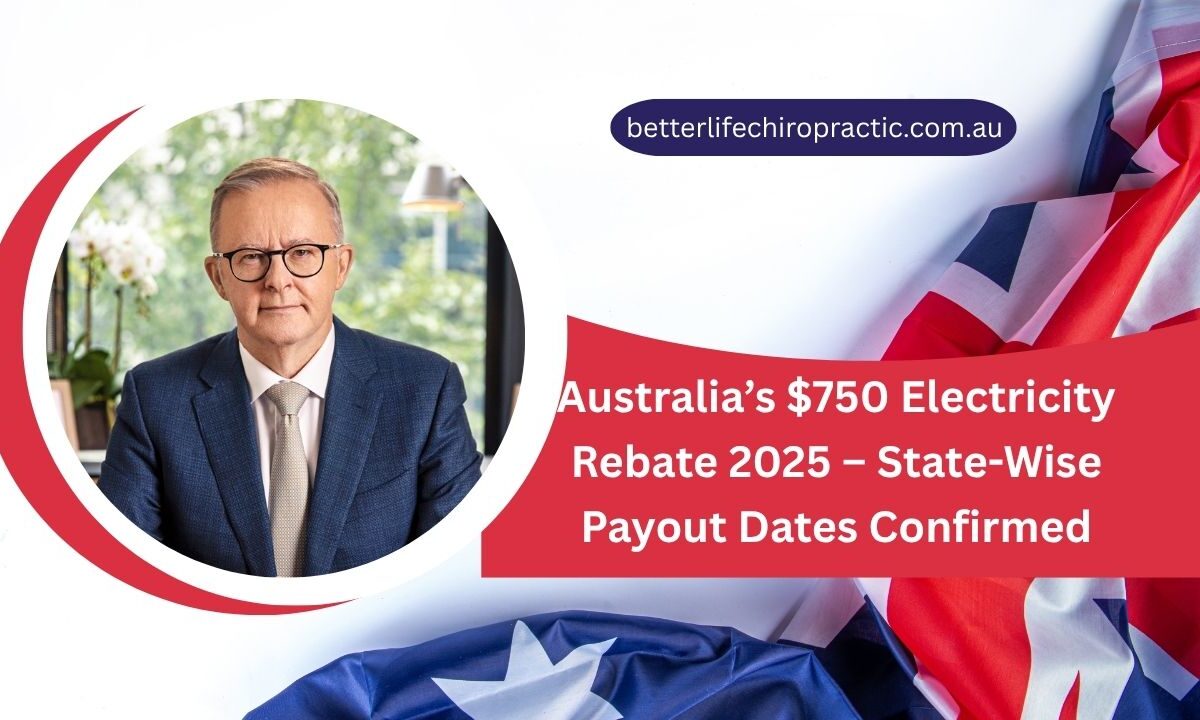In a bid to ease cost-of-living pressures for millions of Australians, the federal government has confirmed the rollout of the $750 electricity rebate under its latest energy bill relief package.
As part of the 2025–26 federal budget, this rebate aims to directly reduce energy bills for eligible households and small businesses.
With state-wise payment schedules now confirmed, this article provides a complete breakdown of eligibility, payment dates, and how to access the rebate.
What Is the $750 Electricity Rebate?
The $750 electricity rebate is a joint initiative between the Commonwealth Government and state and territory governments to help Australians manage rising energy costs. This rebate will be automatically applied to eligible electricity accounts over the 2025–26 financial year.
This program follows the previous year’s $500 rebate and demonstrates the government’s continued commitment to helping low-income households and vulnerable Australians manage essential costs.
Who Is Eligible for the Rebate?
Eligibility for the rebate depends on household type and income support status. The primary recipients include:
- Pensioners receiving Age Pension, Disability Support Pension, or Carer Payment
- Low-income households holding a valid Health Care Card
- Veterans receiving payments from the Department of Veterans’ Affairs (DVA)
- Recipients of JobSeeker, Youth Allowance, or Parenting Payment
- Families receiving Family Tax Benefit (FTB) Part A and/or B
- Small businesses that meet the defined electricity usage criteria
Each eligible household will receive a total of $750 across four quarterly payments.
State-Wise Rebate Payment Schedule (2025–26)
The following table outlines the confirmed payment timeline by state and territory:
| State/Territory | Quarterly Rebate Amount | First Payment Date | Last Payment Date |
|---|---|---|---|
| New South Wales | $187.50 | July 15, 2025 | April 15, 2026 |
| Victoria | $187.50 | July 20, 2025 | April 20, 2026 |
| Queensland | $187.50 | July 10, 2025 | April 10, 2026 |
| South Australia | $187.50 | July 18, 2025 | April 18, 2026 |
| Western Australia | $187.50 | July 12, 2025 | April 12, 2026 |
| Tasmania | $187.50 | July 17, 2025 | April 17, 2026 |
| Australian Capital Territory | $187.50 | July 22, 2025 | April 22, 2026 |
| Northern Territory | $187.50 | July 19, 2025 | April 19, 2026 |
Note: These payments are automatically credited to electricity bills; no application is needed if you are eligible.
How Will the Rebate Be Delivered?
The $750 rebate will be applied directly to electricity accounts as a bill credit. Households and small businesses won’t receive the amount in cash or bank transfer—it will show up as a reduction in their quarterly energy bill.
You should see the first installment listed as a line item titled “Energy Relief Payment“ or similar, depending on your electricity provider.
How to Check Your Eligibility
To ensure you’re on track to receive the rebate:
- Check your Centrelink or DVA payment type – If you receive an eligible payment, you are likely included.
- Verify with your electricity retailer – Most providers are working with government agencies to identify eligible customers.
- Ensure your account is in your name – The rebate is linked to the primary account holder.
- For small businesses, check if your usage falls within the required threshold (typically <100MWh per year).
What If You Haven’t Received the Rebate?
If you believe you’re eligible but haven’t received your rebate:
- Contact your energy provider and ask if your account has been marked for the rebate.
- Update your Centrelink or DVA details to ensure your current electricity account is linked properly.
- Call the state government energy assistance hotline for your region to resolve any mismatches or delays.
Why This Matters
This $750 electricity rebate is part of a broader federal strategy to address inflationary pressures, especially for retirees, low-income Australians, and families with children. With utilities becoming a growing burden for many, such rebates are critical for helping people maintain stability without compromising basic needs.
Income Thresholds for Low-Income Households (Indicative)
| Household Type | Maximum Annual Income |
|---|---|
| Single, no children | $40,000 |
| Couple, no children | $60,000 |
| Single with one child | $52,000 |
| Couple with two children | $78,000 |
Note: These are indicative figures. Actual eligibility is determined by Centrelink or DVA payment receipt.
Government Response and Future Support
The Australian Government has also signaled its intent to review energy subsidies annually. With further investments in renewable energy infrastructure and ongoing global market volatility, targeted rebates are likely to remain a key tool in energy affordability efforts.
Treasurer Jim Chalmers stated that the 2025 rebate “ensures relief goes to the Australians who need it most while we continue transitioning to a more sustainable and affordable energy future.”
The $750 electricity rebate for 2025–26 is a significant support measure for millions of Australians dealing with rising energy costs.
With state-wise payments scheduled and automatic delivery, eligible households and small businesses are set to receive quarterly bill relief throughout the financial year. Ensure your details are up to date to receive your benefit without delays.
Frequently Asked Questions (FAQs)
Q1: Will I need to apply for the $750 electricity rebate?
No. If you are receiving an eligible Centrelink or DVA payment and your electricity account is in your name, the rebate will be automatically applied.
Q2: What if I switch electricity providers mid-year?
You’ll still receive the rebate, but you should inform your new provider and ensure your Centrelink-linked details are updated to avoid disruption.
Q3: Can renters receive the rebate if the electricity account is in the landlord’s name?
Unfortunately, only the account holder receives the rebate. Renters should discuss this with their landlord or property manager to explore solutions.
